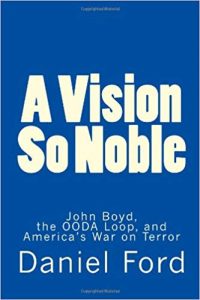For those that know, this is a no-brainer. But, many have only learned this cursorily and may not implement it or give it it’s due. Many can tell you what the acronym is, but do they live it? Can they describe it in detail, in every day terms and situations that will create another student or convert a nay-sayer?
I’m going to do a deeper study of this, because I feel it’s important, and it’s also not well-documented – even by the originator.
In a lot of training this simple concept comes up, but it’s always just given a short intro and then we move on. I know time is always a constraint, so I’m wondering if there’s a better way to inject this material so that it hits home harder, and creates an avenue for further research and deeper understanding for students.
Here’s the thing. Anytime you present material that is difficult for most to truly understand (i.e. violence – it’s uncomfortable at a minimum, and downright difficult to understand and come to terms with) there needs to be more bricks and cement to pull it all together in a full program. So the learning needs to be compartmentalized.
Yes, having a short presentation is the product of attention span, availability, understanding and depth of knowledge of the whole. But, It’s the morsels that will fill you up and continue to nourish you.
Boyd’s material is one of those deceptive morsels – it seems simple, and rolls off the tongue easily, but do we really give it credence? Do we do Boyd justice by only glancing at it to make a relevant point to the rest of our presentation and then move past it as if it’s been understood or merely heard?
To me concepts are like the difference between learning a technique and learning the principles behind the technique – they both get it done, but if you understand the principle, the technique becomes secondary.
There are so many great opportunities out there to learn new material and/or explore ground already covered. I’ve enjoyed each one and brought something away each time. And more importantly, I keep coming back for more – to glean the deeper aspects. Boyd’s OODA loop is one of those that I feel needs more research and a deeper understanding, and perhaps just a bit more of the overall program real estate. Do we relegate it as ‘something to be aware of’ or do we give it a push and ensure it’s place in the overall presentation as a necessary component?
Food for thought, but I think it’s worth the consideration and investment. Tony Blauer comes immediately to mind for me because of how he’s made this concept work. He’s done a ton of research (I have it in my library) on the concept of flinch response. Sounds simple right? And it MAY be at first glance, and how some may present it similarly. BUT, understanding it on a deeper level takes more commitment from us. And it’s worth that extra effort. I can use it better if I understand it better. What’s not to like?
Having learned a lot about violence over the last many years, I kept whittling it down to advantage – it’s not your size (height, weight), but your mindset that will get you through. It’s what you know. It’s what you’re learned. It’s the simple over the complex – what will win in the end of an unexpected encounter.
The hardest part for most of us is coming to that conclusion – finding the art and forgetting about using the hard tools, because the secret is in the soft ones. It’s right in front of us, yet we may devalue it or ignore it because we’re tool-men, and not artisans.
Take a deeper look here:
https://www.artofmanliness.com/articles/ooda-loop/
https://www.artofmanliness.com/articles/ooda-loop/
copyright © 2018, tb



